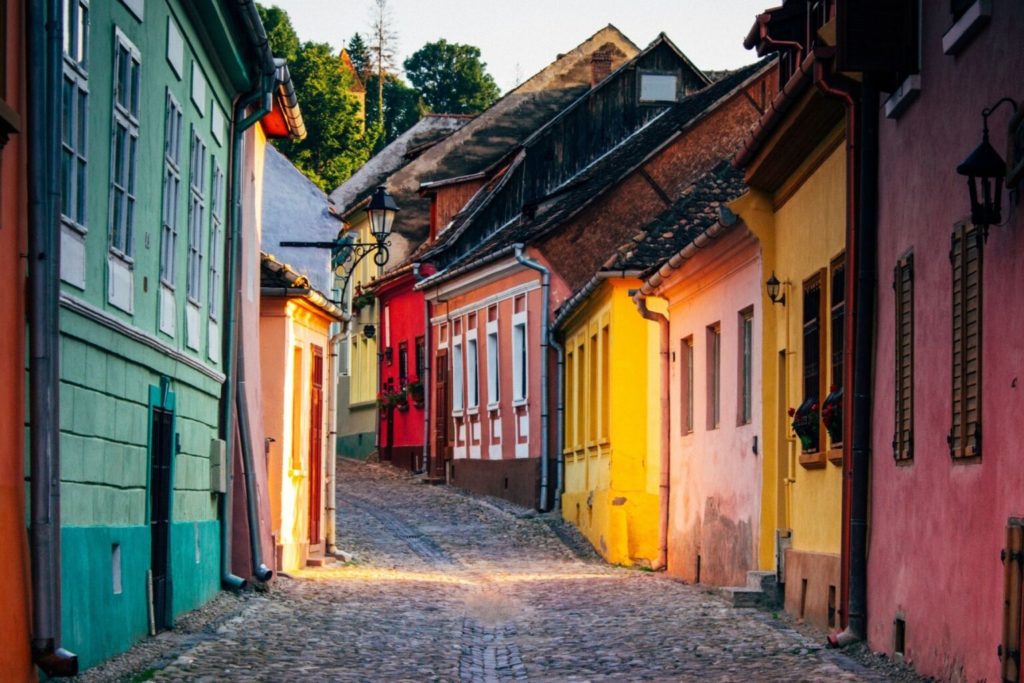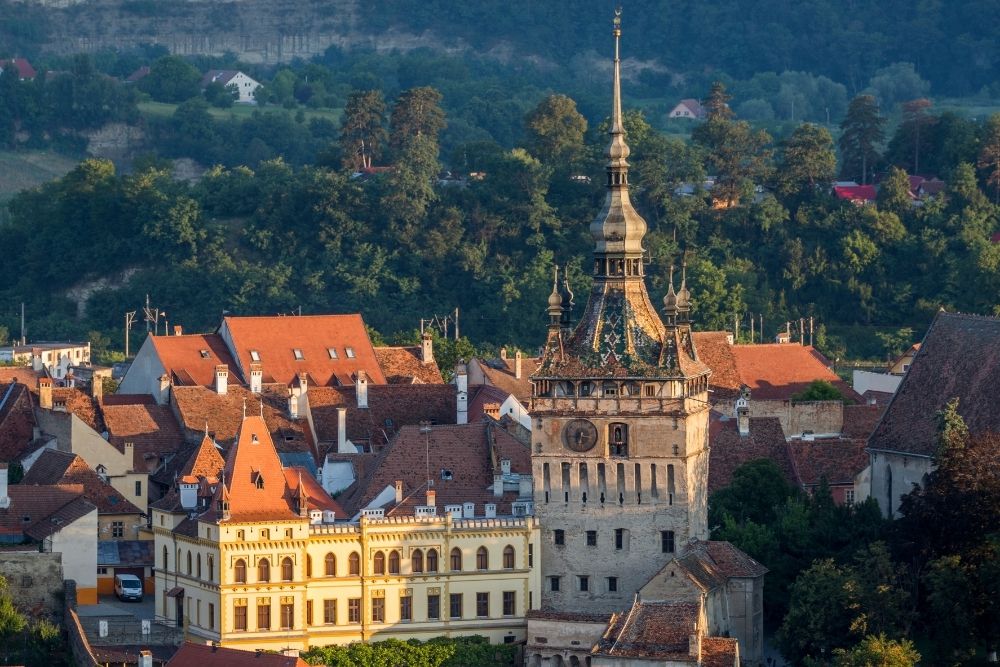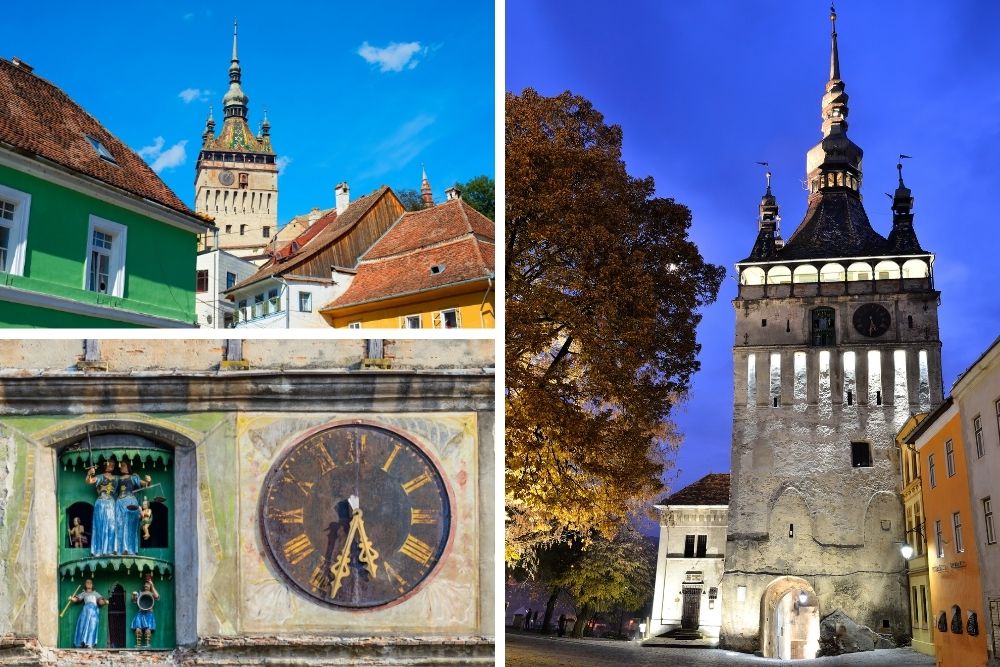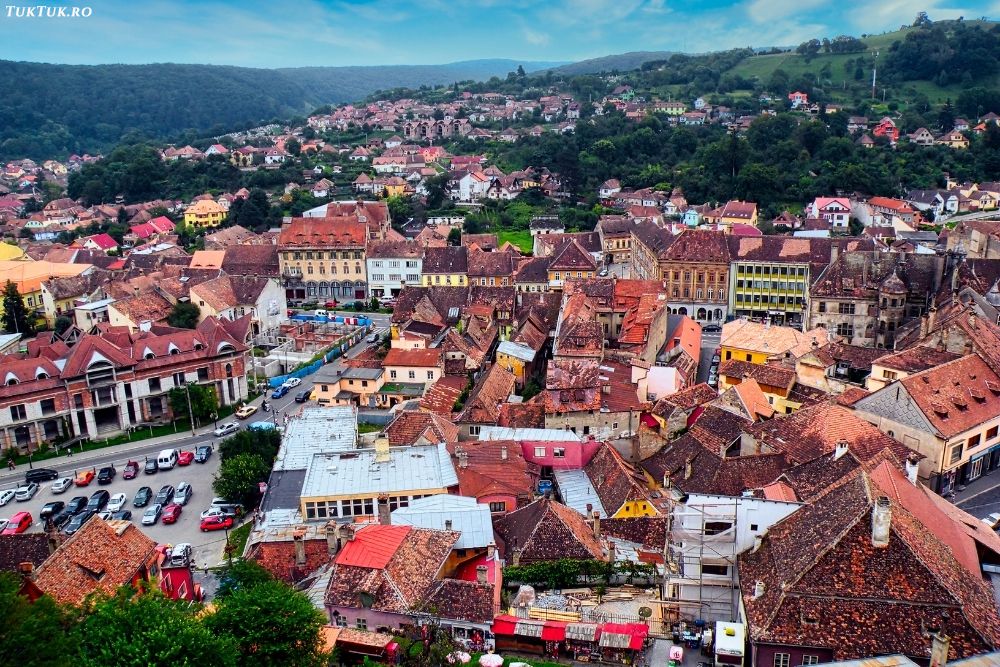Sighisoara is Romania’s best-preserved medieval town, a genuine Transylvanian tourist pearl, transformed in recent decades into a major attraction for Romanian and foreign tourists on holiday or traveling in the center of the country.
The city located in Mures county has a population of about 30,000 inhabitants and magnetizes its visitors with its historical center, included in the UNESCO World Heritage Site. Sighisoara was founded by German settlers (craftsmen and merchants) who arrived in Transylvania at the initiative of the Hungarian king Géza II. These were later known as the “Transylvanian Saxons.” The first documentary mention of the village comes from 1280, under the name Castrum Sex, which speaks about a settlement founded on the ruins of a former Roman castrum.

First fortified in 1350, Sighisoara has had a tumultuous history, including the birth of Vlad the Impaler (in 1431) and numerous attacks by various nations and groups, by plague epidemics or fires. More or less, all these interesting histories are found today in buildings and monuments in the old center of the village. For first-time travelers, here are 10 places to visit in Sighisoara, a mini-guide regarding what to do and what to see in the medieval jewel of Romania.
10 places to see in Sighisoara, Romania

The Stundturm, or “Hours’ Tower,” as the German name of the Sighisoara Tower’s with Clock, was built in the 14th century, with the main entrance gate to the city. In the beginning, it was a simple two-level defense tower (one of the 14 built across the fortresses walls). It was later developed in an ensemble with baroque elements (after the fire in 1676), such as the roof and the four towers in the corners, which symbolized the legal autonomy of Sighisoara, whose town advice could make the decision to apply the death penalty.

The Clock in this tower is unique and was installed in 1648 at the fourth level. The new Clock was mounted in 1906, its mechanism being executed in Switzerland. The most exciting part is the seven figures made of linden wood, reminding of the gods personifying the days of the week: Diana, Mars, Mercury, Jupiter, Venus, Saturn, and the Sun. Above them are the faces of the goddesses of Peace and Justice.

Until 1556, the Clock Tower sheltered the City Council Hall, then the guard’s house, the weapons depot, the court, and the prison. Since 1899 the Sighisoara History Museum has been located in the tower. Today, the Tower with Clock is one of the main tourist attractions in Sighisoara, a climb in the pavilion of the six-story building, 64 meters high, offering the chance to enjoy superb panoramic views of the city.
Address: Strada Turnului, Sighisoara.



































